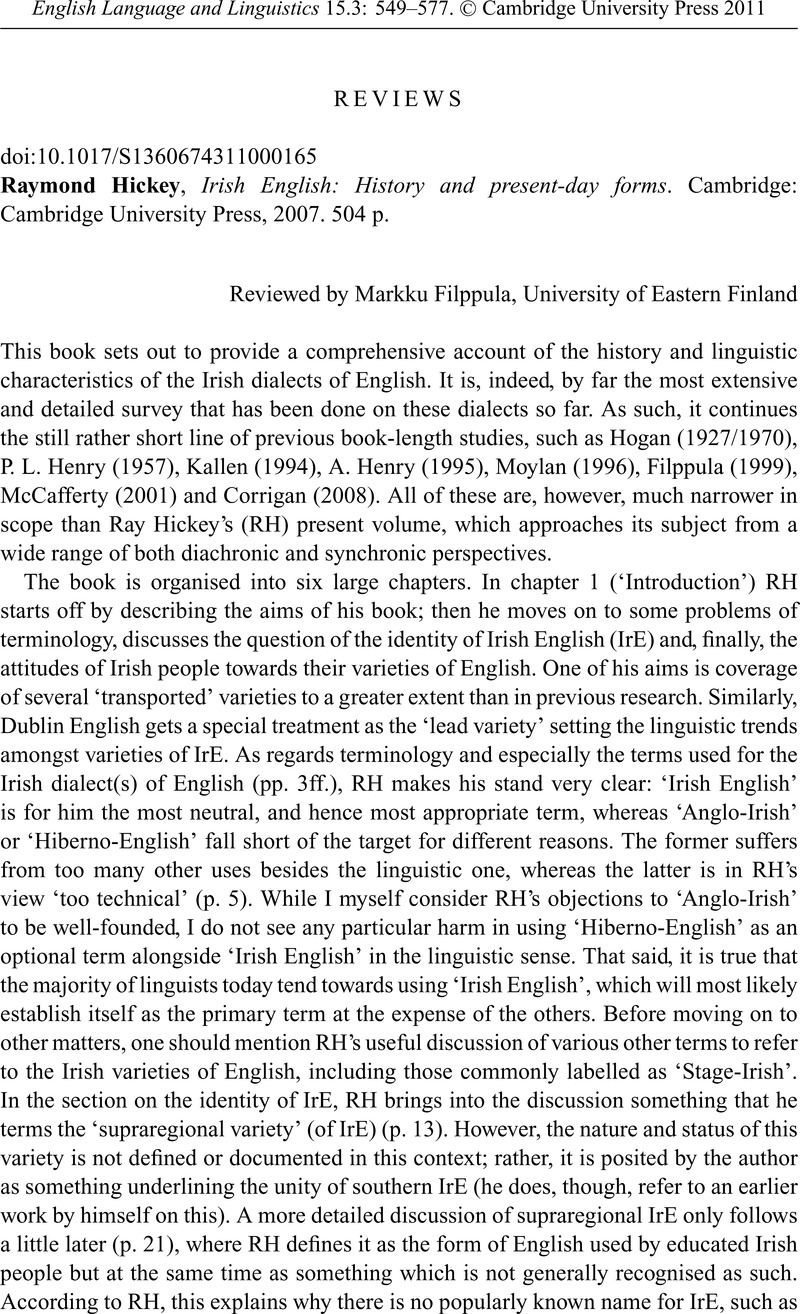Crossref Citations
This article has been cited by the following publications. This list is generated based on data provided by Crossref.
Hickey, Raymond
2020.
Review of Amador Moreno, Carolina P. 2019. Orality in Written Texts: Using Historical Corpora to Investigate Irish English (1700−1900). London: Routledge. ISBN: 978-1-138-80234-6. https://doi.org/10.4324/9781315754321.
Research in Corpus Linguistics,
Vol. 8,
Issue. ,
p.
201.
Farr, Fiona
2021.
Review of Hickey, Raymond and Carolina P. Amador-Moreno eds. 2020. Irish Identities: Sociolinguistic Perspectives. Berlin: Mouton de Gruyter. ISBN: 978-1-501-51610-8. https://doi.org/10.1515/9781501507687.
Research in Corpus Linguistics,
Vol. 9,
Issue. 2,
p.
191.



